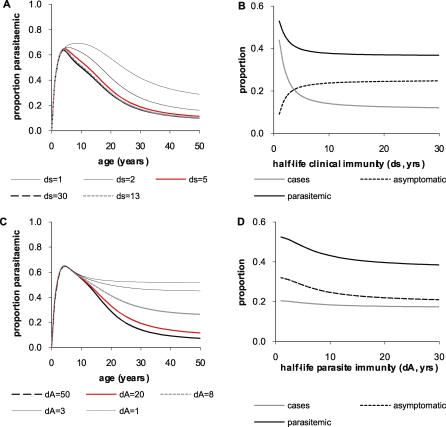Figure 5. Sensitivity of the Relationship between Parasitaemia, Clinical Disease, and Age to Assumptions about the Duration of Acquired Immunity.
(A,B) Sensitivity to the duration of the immune response that reduces susceptibility to clinical disease where dS is the half-life; (A) shows the relationship between parasitaemia and age, and (B) shows the proportion of people predicted by the model to be symptomatic cases, have asymptomatic infections, and be parasitaemic (i.e., have patent infections) for different values of dS. Subpatent infections are not shown. For dS less than 5 y, the model predicts too high a proportion of all infections to be symptomatic cases rather than asymptomatic (B).
(C,D) Sensitivity to the duration of the immune response that increases clearance of detectable parasites where dA is the half-life; (C) shows the relationship between parasitaemia and age, and (D) shows the proportion of people predicted by the model to be symptomatic cases, asymptomatic infections, and parasitaemic for different values of dA. For dA less than approximately 20 y, the model predicts that high levels of parasitaemia will persist into adulthood (C). Results are presented for an annual EIR of 110 ibppy. Similar patterns are obtained for lower EIR values.

